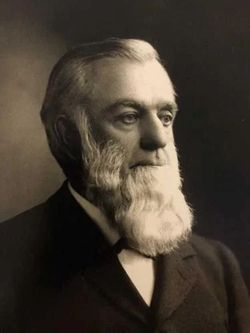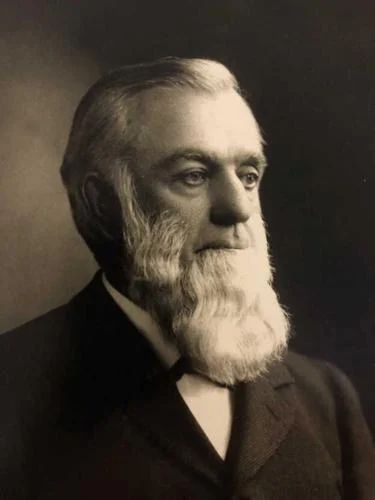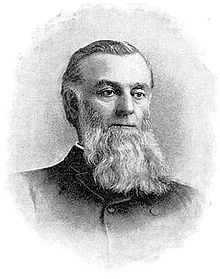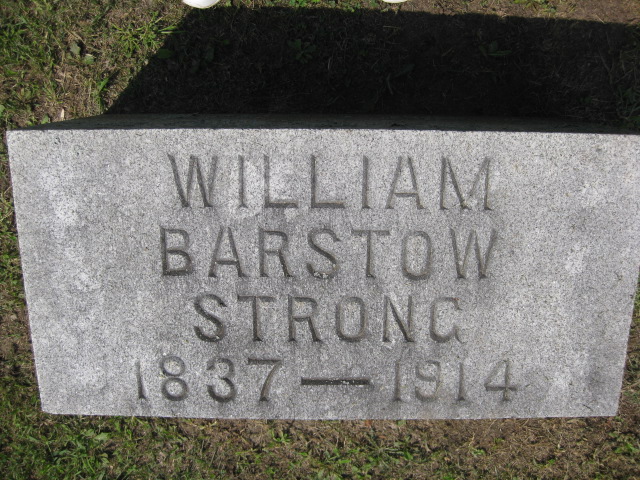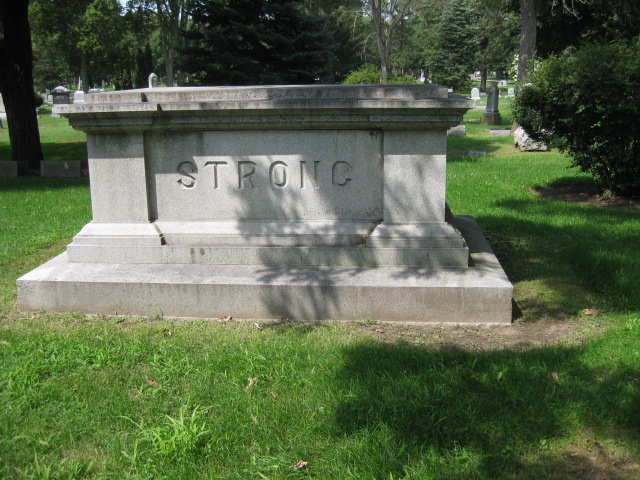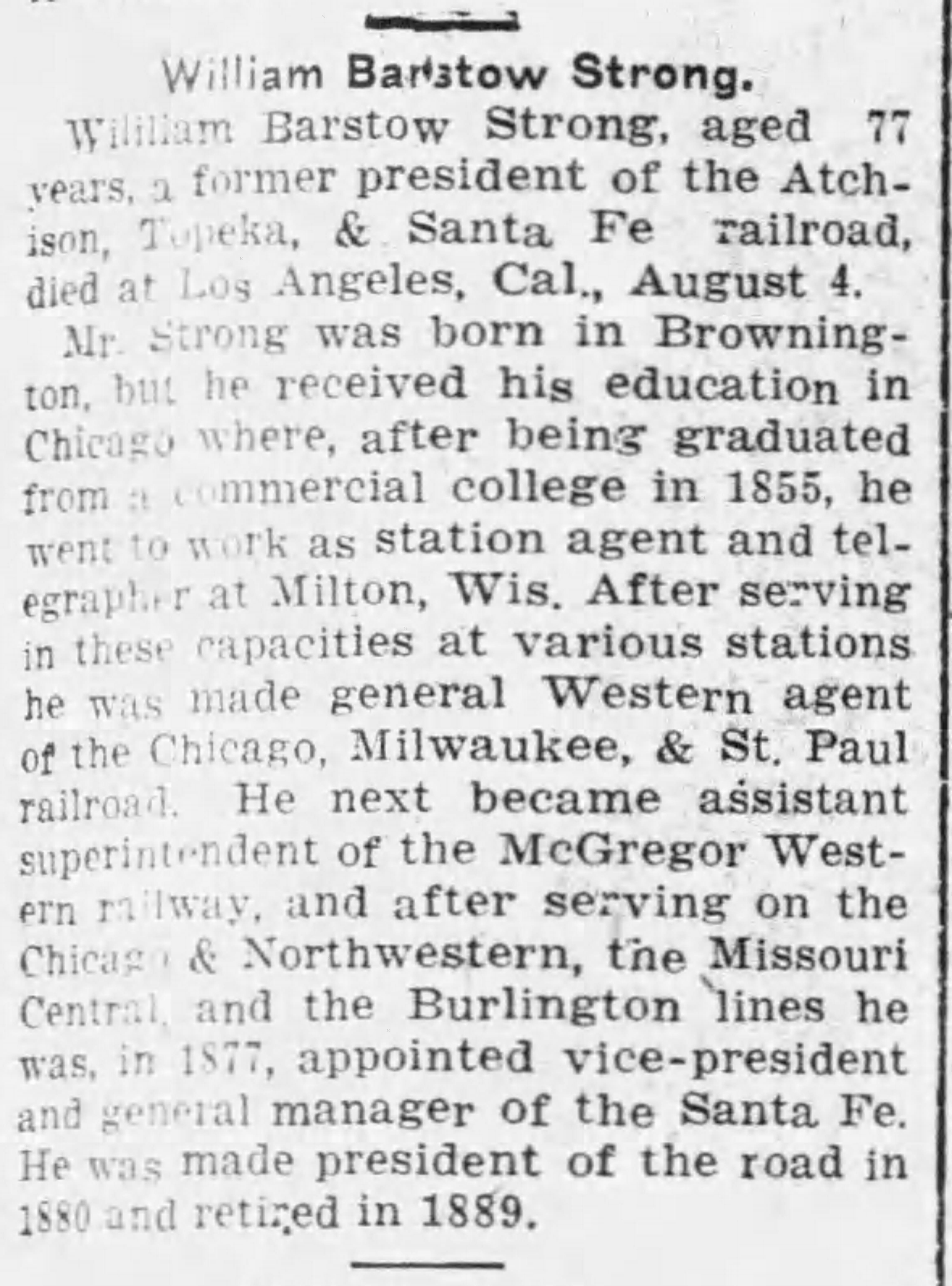"The City of Strong City, Kansas, is named in his honor."
Thanks,
DSHCaboose in downtown Strong City, Kansas
History of
Strong City, Kansas
Chase County
Located in Chase County, the town of Strong City originated in March 1871 when the Santa Fe Railroad was completed to the point then known as Cottonwood Station.
In February 1881, a petition was signed by a majority of citizens and presented to the legislature asking that the body officially change the name to Strong. It was approved and Cottonwood Station was renamed in honor of William Barstow (W. B.) Strong, general superintendent and later, president of the Santa Fe Railway System. In 1945 "City" was added to the name "Strong".
A six stall roundhouse employed many workers and was active from 1887 - 1938.
The original depot burned in 1902 and was replaced in 1903. In 1913, due in part to the very heavy passenger and freight traffic, a new brick depot trimmed in native cut limestone was built for a cost of $20,000. The new depot was up to date in every way and was one of the best in the Santa Fe System.
The Stone Industry
The stone industry was the main factor in upbuilding Strong City, and such men as John Emslie, the Rettiger brothers, Pat Norton, Tweedale and Parker and L.P. Santy were employers of many men. These men began their work in Strong City with the building of the Chase County Courthouse at Cottonwood Falls in 1872.
The Charles and Barney Lantry's firm built many stone bridges for the Santa Fe and other western railroads. In the beginning it built stone-work for certain phases of railroad construction, but later they did build complete railroads, grading, laying the track, building the bridges and stations, the roundhouses and other division buildings.
The first stone-crushers Kansas ever saw were brought to the state by the Lantrys and were operated on a very large scale on Crusher Hill at Strong City. Most of the stone for masonry and road-ballast for their jobs all over the west, was taken from their quarries at Strong City.
Big stones for the Capitol of Topeka came from Strong City, each stone weighing 13,000 pounds. Stone was also used for public and private buildings in Kansas, Missouri, Nebraska, Iowa and Colorado. Suggested edit: I found this on Family Search that I thought was interesting, that you can add to his bio. His acct. # on Fam. Srch. is LBDGJ57
William Barstow Strong, son of Elijah Gridley Strong, born May 16, 1837 in Brownington, Vermont, died August 3, 1914. He married October 2, 1859, Abby Jane Moore, of Beloit, Wisconsin. He began his railroad career as a telegraph operator and station agent in Milton, Wisconsin and was later assistant general superintendent of the Chicago, Burlington, and Quincy Railroad. Eventually, he became president of the Atchison, Topeka, and Santa Fe Railway System and he developed that system from 637 miles to 9,000 miles. Three towns are named for him: Strong City and Gridley in Kansas and Barstow, California. After retiring in 1890, he lived in Beloit and bought a farm he named Partridge Farm in memory of his mother. He developed the northeast part of Beloit and founded and endowed the Elijah Gridley Chapel (in memory of his father), the Strong Emergency Hospital (first in Beloit), and the Strong School. Four of the streets in Beloit bear the Strong family name (Strong, Partridge, Barstow, and Ashley). He bought a summer home in Brownington, Vermont and in 1895 bought the Prospect Hill land and built an observatory there for all to enjoy the moutain view. He renovated the church and added a steeple and bell with the inscription, "Memorial to Elijah and Sylvia Strong, Grandparents, by William Barstow Strong, Grandson, September 1, 1899". Abby was the first white female child born in Beloit.
Source: Strong Family History Update Volume IV published by The Strong Family Association of America, Inc.
Contributor: Angela Meadows (48803980) • [email protected]
"The City of Strong City, Kansas, is named in his honor."
Thanks,
DSHCaboose in downtown Strong City, Kansas
History of
Strong City, Kansas
Chase County
Located in Chase County, the town of Strong City originated in March 1871 when the Santa Fe Railroad was completed to the point then known as Cottonwood Station.
In February 1881, a petition was signed by a majority of citizens and presented to the legislature asking that the body officially change the name to Strong. It was approved and Cottonwood Station was renamed in honor of William Barstow (W. B.) Strong, general superintendent and later, president of the Santa Fe Railway System. In 1945 "City" was added to the name "Strong".
A six stall roundhouse employed many workers and was active from 1887 - 1938.
The original depot burned in 1902 and was replaced in 1903. In 1913, due in part to the very heavy passenger and freight traffic, a new brick depot trimmed in native cut limestone was built for a cost of $20,000. The new depot was up to date in every way and was one of the best in the Santa Fe System.
The Stone Industry
The stone industry was the main factor in upbuilding Strong City, and such men as John Emslie, the Rettiger brothers, Pat Norton, Tweedale and Parker and L.P. Santy were employers of many men. These men began their work in Strong City with the building of the Chase County Courthouse at Cottonwood Falls in 1872.
The Charles and Barney Lantry's firm built many stone bridges for the Santa Fe and other western railroads. In the beginning it built stone-work for certain phases of railroad construction, but later they did build complete railroads, grading, laying the track, building the bridges and stations, the roundhouses and other division buildings.
The first stone-crushers Kansas ever saw were brought to the state by the Lantrys and were operated on a very large scale on Crusher Hill at Strong City. Most of the stone for masonry and road-ballast for their jobs all over the west, was taken from their quarries at Strong City.
Big stones for the Capitol of Topeka came from Strong City, each stone weighing 13,000 pounds. Stone was also used for public and private buildings in Kansas, Missouri, Nebraska, Iowa and Colorado. Suggested edit: I found this on Family Search that I thought was interesting, that you can add to his bio. His acct. # on Fam. Srch. is LBDGJ57
William Barstow Strong, son of Elijah Gridley Strong, born May 16, 1837 in Brownington, Vermont, died August 3, 1914. He married October 2, 1859, Abby Jane Moore, of Beloit, Wisconsin. He began his railroad career as a telegraph operator and station agent in Milton, Wisconsin and was later assistant general superintendent of the Chicago, Burlington, and Quincy Railroad. Eventually, he became president of the Atchison, Topeka, and Santa Fe Railway System and he developed that system from 637 miles to 9,000 miles. Three towns are named for him: Strong City and Gridley in Kansas and Barstow, California. After retiring in 1890, he lived in Beloit and bought a farm he named Partridge Farm in memory of his mother. He developed the northeast part of Beloit and founded and endowed the Elijah Gridley Chapel (in memory of his father), the Strong Emergency Hospital (first in Beloit), and the Strong School. Four of the streets in Beloit bear the Strong family name (Strong, Partridge, Barstow, and Ashley). He bought a summer home in Brownington, Vermont and in 1895 bought the Prospect Hill land and built an observatory there for all to enjoy the moutain view. He renovated the church and added a steeple and bell with the inscription, "Memorial to Elijah and Sylvia Strong, Grandparents, by William Barstow Strong, Grandson, September 1, 1899". Abby was the first white female child born in Beloit.
Source: Strong Family History Update Volume IV published by The Strong Family Association of America, Inc.
Contributor: Angela Meadows (48803980) • [email protected]
Family Members
Sponsored by Ancestry
Advertisement
Advertisement
